If you’re a proud owner of a beautiful wooden deck, you know how important it is to protect it from the harsh elements. Deck stains are a popular choice for enhancing the natural beauty of wood while providing a protective barrier against moisture, UV rays, and other environmental factors. However, not all deck stains are created equal, and their effectiveness in protecting wood can vary greatly. In this comprehensive guide, we’ll explore the role of deck stains in wood protection and what you need to know to ensure your deck remains in pristine condition for years to come.
Understanding Deck Stains
What is Deck Stain?
Deck stains are specialized coatings designed to penetrate deep into the wood surface, providing both color and protection. These stains can range from semi-transparent to solid colors, allowing you to achieve the desired look while still showcasing the natural grain of the wood.
Types of Deck Stains
There are several types of deck stains available on the market, each with its own advantages and drawbacks:
- Oil-based stains: Provide superior penetration and water repellency but can be more difficult to apply and maintain.
- Water-based stains: Easier to apply and clean up, but may not offer the same level of protection as oil-based stains.
- Semi-transparent stains: Allow the natural wood grain to show through while providing some UV protection.
- Solid stains: Offer a more opaque finish and better UV protection but can obscure the wood’s natural beauty.
Deck Stain Protect Wood?
While deck stains can provide some level of protection, their effectiveness depends on several factors:
- Wood condition: Properly prepping and maintaining the wood surface is crucial for optimal stain performance.
- Application techniques: Following the manufacturer’s instructions and applying the stain correctly can significantly impact its longevity and protective properties.
- Environmental conditions: Extreme temperatures, moisture levels, and UV exposure can affect the stain’s durability over time.
- Maintenance: Regular cleaning and reapplication as recommended by the manufacturer are essential for maintaining the stain’s protective qualities.
Enhancing Deck Stain Protection
While deck stains offer valuable protection, there are additional measures you can take to further enhance your deck’s longevity:
- Use a wood preservative: Applying a wood preservative before staining can help protect against rot, decay, and insect damage.
- Incorporate wood repair products: Products like those from Rhino Wood Repair can effectively address weakened wood and enhance the durability and longevity of coatings like paint and stain.
- Maintain proper drainage: Ensure your deck has adequate drainage to prevent water pooling, which can lead to rot and premature stain failure.
- Regularly clean and inspect: Routinely clean and inspect your deck for signs of wear or damage, addressing any issues promptly.
Why Choose Rhino Wood Repair Products for Your Deck Stain Project?
Rhino Wood Repair products not only effectively address weakened wood but also enhance the durability and longevity of coatings like paint and stain. By incorporating Rhino Wood Repair products into your project, you get the best quality results!
FAQs about Deck Stains and Wood Protection
How often should I re-stain my deck?
The frequency of re-staining depends on various factors, including the type of stain used, exposure to sunlight and weather, and the condition of the wood. Most manufacturers recommend re-staining every 1-3 years for optimal protection.
Can I apply deck stain over an old, weathered surface?
While it is possible to apply deck stain over an old, weathered surface, proper surface preparation is crucial. The old stain or finish must be removed, and the wood must be cleaned and sanded to ensure proper adhesion and penetration of the new stain.
Will deck stain protect against mold and mildew?
Some deck stains contain additives that can help prevent mold and mildew growth, but their effectiveness can be limited in damp or shaded areas. Proper ventilation, cleaning, and maintaining a dry surface are essential for preventing mold and mildew growth.
Can I use deck stain on other outdoor wood surfaces?
Yes, many deck stains are suitable for use on other outdoor wood surfaces, such as fences, pergolas, and outdoor furniture. However, it’s always best to check the manufacturer’s recommendations for specific applications.
Top Tips for Protecting Your Deck with Stain:
- Choose a high-quality, reputable deck stain suitable for your climate and exposure conditions.
- Properly prepare the wood surface by cleaning, sanding, and addressing any necessary repairs.
- Follow the manufacturer’s instructions carefully for proper application and coverage rates.
- Consider incorporating wood repair products like those from Rhino Wood Repair for enhanced protection and longevity.
- Maintain your deck by regularly cleaning, inspecting, and re-staining as needed.
About the Author
This comprehensive guide on deck stain protection was brought to you by Rhino Wood Repair, a company dedicated to providing top-quality wood repair solutions. Our founder and chemist, Robin Pixner, has years of experience in the industry and a passion for helping homeowners and professionals alike achieve flawless woodwork.
At Rhino Wood Repair, we understand the importance of preserving the beauty and longevity of wood surfaces. Our products are carefully formulated to ensure exceptional results, whether you’re tackling a small DIY project or a large-scale restoration.
With our expertise and commitment to excellence, you can trust Rhino Wood Repair to provide you with the knowledge and tools you need to tackle any wood repair project with confidence. Visit our website or contact us today to learn more about our innovative wood repair solutions. See the best products for deck stain here.
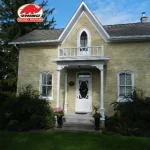 Frequently Asked Questions
Frequently Asked Questions Videos
Videos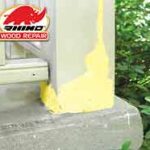 Colourful Chemist cooks up wood-repair product
Colourful Chemist cooks up wood-repair product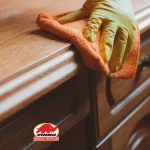 Custom Adhesive Epoxies & Formulations
Custom Adhesive Epoxies & Formulations THE SIMPLE SOLUTION TO A DIFFICULT PROBLEM.
THE SIMPLE SOLUTION TO A DIFFICULT PROBLEM.
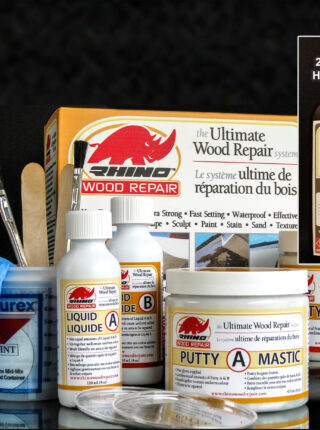
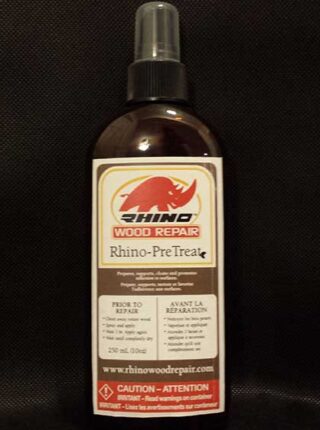
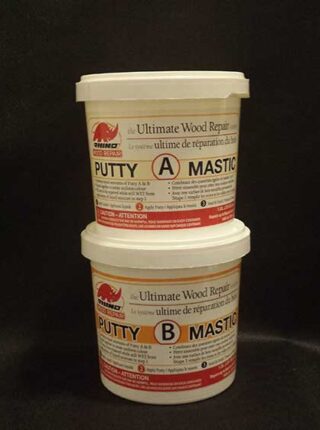
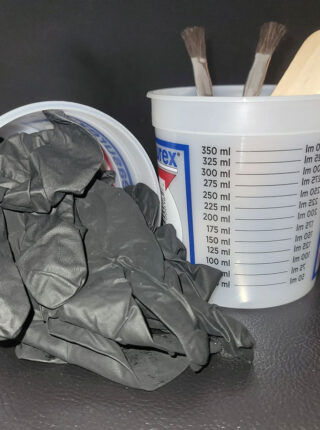
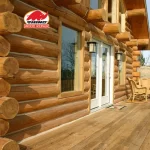 Rhino Wood Repair for Log Homes Looking to combat wood rot on your log home? Enter Rhino Wood Repair — the vanguard of wood restoration, with a legacy spanning over three decades. Led by Robin Pixner, a visionary in the field of wood preservation, our mission is simple yet profound: to breathe new life into aging wood, to fortify its strength, and to ensure that the legacy of log homes endures for generations to come.
Rhino Wood Repair for Log Homes Looking to combat wood rot on your log home? Enter Rhino Wood Repair — the vanguard of wood restoration, with a legacy spanning over three decades. Led by Robin Pixner, a visionary in the field of wood preservation, our mission is simple yet profound: to breathe new life into aging wood, to fortify its strength, and to ensure that the legacy of log homes endures for generations to come.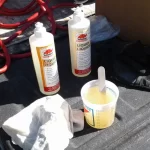 Wood Epoxy
Wood Epoxy
